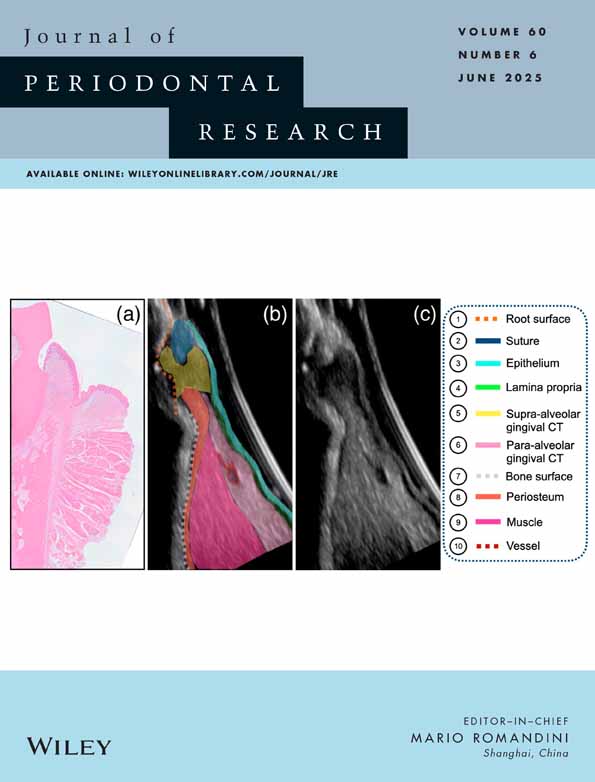H3-proline study of aging periodontal ligament matrix formation:
Comparison between matrices adjacent to either cemental or bone surfaces
Abstract
Recent publications suggested the presence of a tooth related and alveolar bone related system within the periodontal ligament. To further test this hypothesis, we attempted to histologically and autoradiographically follow matrix formation in mouse PDL at different sites and different ages. Twenty-eight BNL Swiss albino mice 5, 26, 52, and 104 weeks of age were maintained on a standard pellet diet and water ad libitum. Each animal received 4 subcutaneous injections of 2 μCi/gm body weight of H3-proline per dose (Spec. Act. 1·5 Ci/mM) on days t0, t4, t8, and t12. On day t13 animals were sacrificed, the maxillae removed and prepared for histologic and autoradiographic analysis. Grain counts were performed from the midline of the PDL to (a) the bony surface and (b) the cemental surface at 4 specific sites around the mesial root of the first maxillary molar. Differences in results were analyzed statistically and significance was based on Student's t-test and a confidence level of 0·001. From our data, it appeared that under normal functional demands, the rates of matrix formation in the mouse PDL appeared to be similar between alveolar bone surface related and cemental surface related tissues at all sites tested. With advancing age, an overall reduction in PDL matrix formation was also noted.




